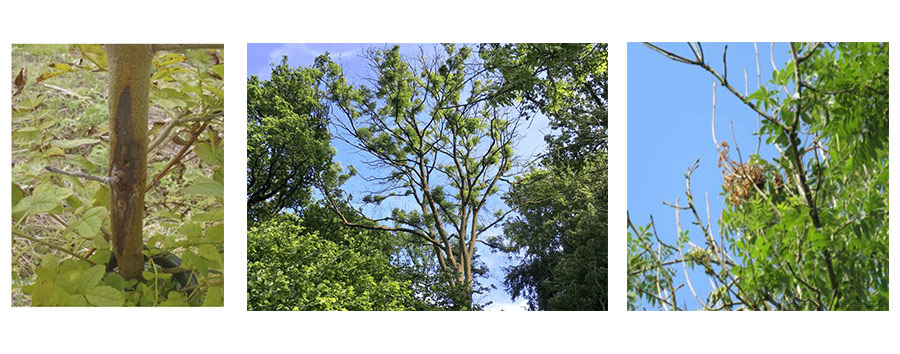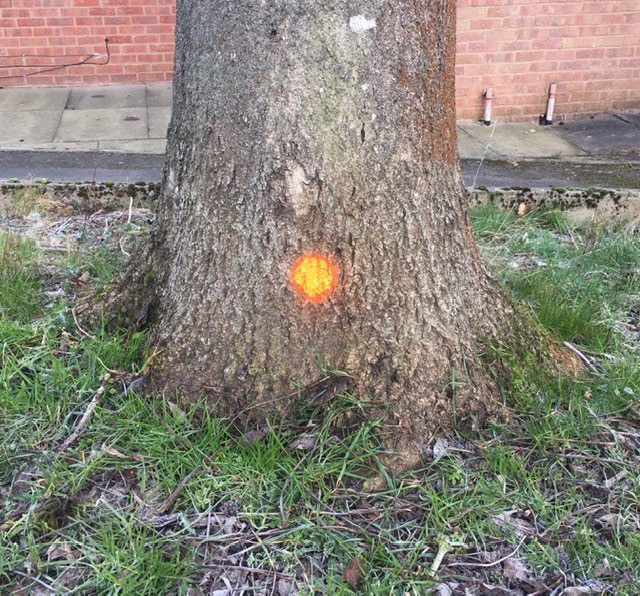Ash dieback

Find out about ash dieback, how we manage its impact and information for tree owners.
Quick links
What is it?
Ash dieback is a disease affecting ash trees, caused by a fungus hymenoscyphus fraxineus. It’s the most significant tree disease to affect the UK since Dutch elm disease. This fungus causes a range of symptoms from leaf spots, stem lesions, branch dieback and eventually the death of the tree. There is no known cure to this disease.
What happens if trees get infected?
The immediate impact of ash dieback will be the requirement to fell the most severely infected ash trees to maintain public safety. Affected trees become unpredictably fragile as the disease takes hold. They can drop branches or fall entirely in the later stages of the disease.
How are we managing ash dieback in the city?
There are just over 25,000 ash trees growing on our land which is about 15% of our trees. Add to this the number of privately owned ash trees within the city and the estimated total number will be around 40,000 trees.
We know where our trees are; using this database and survey data we can manage our trees in a controlled data led approach which will be guided by our ash dieback action plan.
Identification of infected trees
All known infected ash trees will be marked with a small orange dot near the base of the tree. This will alert you to the trees condition and give you prior notice of its removal (no specific dates can be given on the removal of the marked trees).

If you own an ash tree
Private landowners have a duty of care to prevent injury or damage to neighbours and anyone visiting their land. The Highways Act also requires them to ensure their trees do not pose danger to people on roads and footpaths.
If you are concerned, or your tree is starting to show signs of infection you should have the tree’s condition assessed by an arborist.
If your ash tree is within falling distance of a public highway (including footpaths and bridleways) and shows advanced signs of ash dieback infection, you may be served a notice to deal with the hazardous tree by Leicester City Council’s Highways Authority under section 154 of the Highways Act.
Businesses have additional requirements under the Health and Safety at Work Act to ensure their workplaces are safe.
Larger landowners and businesses should take the following steps:
- identify how many ash trees you have and where they are
- assess their current condition - use percentage of canopy cover remaining
- identify where affected trees pose a risk
- appoint qualified tree specialists to remove hazardous trees
If you are unsure of your responsibilities, you can use the guidance below:
- Ash Dieback: A guide for tree owners - The Tree Council
- Guidance for tree owners, managers, contractors and consultants (PDF)
Planning, Tree Preservation Orders and conservation areas
Prior to any tree works being undertaken you are advised to check whether the tree requiring work is subject to a Tree Preservation Order (TPO) or is located within a conservation area. Most reputable tree care companies will advise and help their customers with this.
Trees already infected by ash dieback will be judged individually on their merits, bearing in mind the location and the need to retain trees which may prove to be resilient.
Dead and dangerous trees exemptions
The council must be given five days written notice of works on protected trees that are dead or dangerous and pose an immediate risk. Infection alone does not constitute an exemption, only cases of advanced decline or death.
Go to our Protecting trees page.